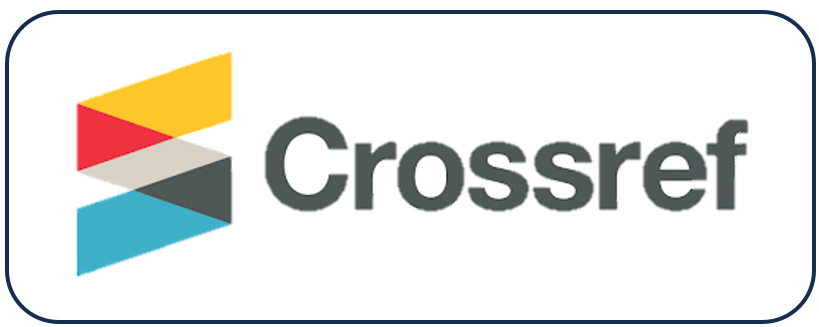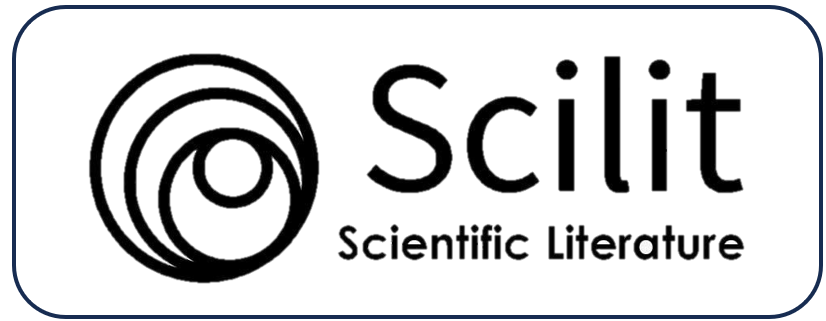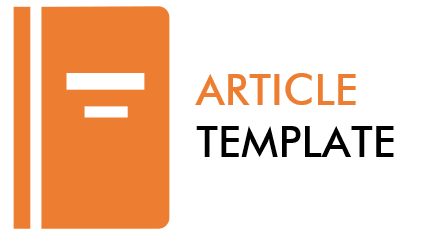Leksikal Kain dalam Peribahasa Melayu Nusantara: Kajian Semantik Inkuisitif
DOI:
https://doi.org/10.31002/transformatika.v8i1.1506Keywords:
kain; peribahasa; semantik inkuisitifAbstract
Inquisitive semantic studies are studies that attempt to explain the meaning or attitude of a proverb in more depth. Fabric is a textile material made from natural fibers or man- made fibers obtained through the process of weaving or weaving. This study explains the meaning and domain of a lexical proverb based on inquisitive semantic studies. Methods of observation and analysis of documentation are used as methods of data collection. Data analysis can be done through three stages: script semantic analysis, cognitive semantic analysis and inquisitive semantic analysis. The results showed that the proverb cloth in proverbs combines with human organs and based on the type of fabric. The combinations that emerged were cloth-mouth, cloth-waist and cloth-tongue. While the types of fabrics that appear are gauze, sarongs, cindai cloth and kadut cloth. The domains found are the domains of 1) caution, 2) irony/satire, 3) vain.
References
Astrid, T dan Rachmat, H. (2016). Kesehatan Gigi dan Mulut-Apa yang Sebaiknya Anda Tahu?. CV Andi Offset: Yogyakarta
Cruse, D. Alan and Croft William. (2004). Cognitive Linguistics. Cambridge University Press.
Dewan Bahasa dan Pustaka. (2005). Kamus Dewan. Dewan Bahasa dan Pustaka.
Dessiliona, Tryta., Nur, T. (2018). Metafora Konseptual Dalam Lirik Lagu Band Revolverheld Album In Farbe. Sawerigading, 24(2), 177–184. https://doi.org/10.26499/sawer.v24i2.524
Fahruli, A., & Ikhsan. (2018). Pra Rancangan Pabrik Pertenunan Kain Kasa Steril Kapasitas Produksi 108.000 Kilogram Per Tahun. https://dspace.uii.ac.id/handle/123456789/9841
Herpindo, H., Wulandari, S., Ristiyani, R., & Nikmatullah, M. R. (2024). Mekanisme Valensi Morfologis pada Verba Bahasa Indonesia. Jurnal Bahasa dan Sastra, 12(1). https://doi.org/10.24036/jbs.v12i1.127710
Hermandra, H. (2022). Motif Kawung Pada Batik Tradisional Yogyakarta: Kajian Semantik Inkuisitif. Ranah: Jurnal Kajian Bahasa, 11(2), 378.
https://doi.org/10.26499/rnh.v11i2.5219
Jubba, H., Rafi, M., & Qodir, Z. (2021). Politik Identitas Melayu Islam sebagai Upaya Mewujudkan Budaya Berintegritas. Politicon : Jurnal Ilmu Politik, 3(1), 88–110. https://doi.org/10.15575/politicon.v3i1.11481
Kamrani & Sadiq (2023). Anatomi, Kepala dan Leher, Rongga Mulut (Mulut). Pulau Harta Karun (FL).
Kartiwa, Suwarti. (1987). Kain Sarung Indonesia. Djambatan Murthy, T., Subet, M. F., & Daud, M. Z. (2019). Healthy Diet Reflection in Tamil Proverbs: An Inquisitive Semantic. Jurnal Sains Sosial Dan Humaniora, 3(2), 117– 129. https://doi.org/10.22202/jg.2022.v8i1.5623
Huda, M. K., Nikmatullah, M. R., & Nurahmah, N. (2023). Verba Mencuci “Kumbah” dalam Bahasa Jawa: Kajian Metabahasa Semantik Alami. Dharma Sastra: Jurnal Penelitian Bahasa dan Sastra Daerah, 3(2), 136-146.
Nor Hashimah JalaluddinNor Hashimah Jalaluddin. (2014). Semantik dan akal budi Melayu. University Kebangsaan Malaysia.
Poespo, G. (2005). Pemilihan Bahan Tekstil. PT. Kanisius
Ramadhanty, A., Chandra, N., Ardianto, E., & Budiman, A. (2023). Simbol dan Makna Berkain dalam Kalangan Pecinta Wastra. Kajian Branding Indonesia, 5(2), 127. https://doi.org/10.21632/kbi.5.2.127-139
Said, S. H. (2015). Kamus Peribahasa Melayu. Pelangi Setiadi, W. (2018). Korupsi di Indonesia (Penyebab, Bahaya, Hambatan Dan Upaya
Pemberantasan, Serta Regulasi). 15, No 3, 1–26. https://doi.org/10.38035/jmpis.v2i2.595
Wiradharma, G., & Tharik, A. (2016). Metafora Dalam Lirik Lagu Dangdut: Kajian Semantik Kognitif. Arkhais, 7(1), 5–14. https://doi.org/10.30742/sv.v1i2.737
Downloads
Published
How to Cite
Issue
Section
License
Copyright (c) 2024 Transformatika: Jurnal Bahasa, Sastra, dan Pengajarannya

This work is licensed under a Creative Commons Attribution-NonCommercial-NoDerivatives 4.0 International License.
























